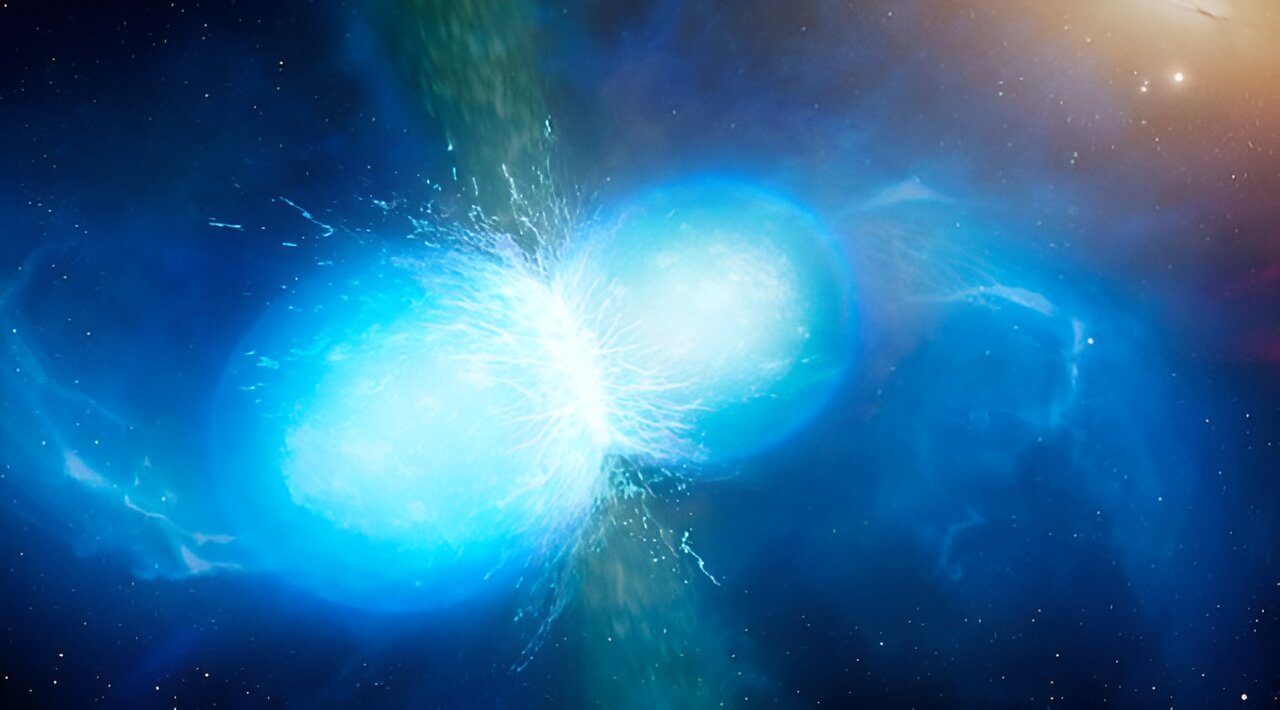At first glance, the gravitational waves generated by the merger of black holes and neutron stars have nothing to do with the emergence of life on Earth. However, recently scientists dealing with the evolution of chemical elements in the universe have questioned this statement.

New research by scientists on chemical elements
Can human existence depend on gravitational waves? Some key elements of our biological composition may originate from astrophysical events that occur due to the existence of gravitational waves, suggests a research team led by John R. Ellis of Kings College London.
In particular, iodine and bromine appear on Earth due to a special nuclear process that occurs when neutron stars collide. However, the same process generates gravitational waves, space-time fluctuations that spread across the universe. Thus, there may be a direct connection between these two phenomena.
Humans are mainly composed of hydrogen, carbon and oxygen, with many additional microelements. There are 20 elements that make up the bodies of living beings on earth, including humans. Those with an atomic number less than 35 are formed in supernovae, explosions of stars that have exhausted their nuclear fuel and collapsed inward. The collapse leads to an explosion that scatters their atoms throughout the universe.
But two elements are formed differently — iodine, which is necessary for key hormones produced by the thyroid gland, and bromine, which is used to create collagen scaffolds that form the structure of tissues.
Amazing r-process
About half of the atoms of heavy elements on Earth (heavier than iron) are formed as a result of the so-called “rprocess” — the phenomenon of rapid neutron capture. It occurs when the nucleus of a heavy atom captures several free neutrons before, but its beta decay does not have time to occur…
Where does the r-process take place? One possible version is the material ejected during the rebound from a supernova with a core collapse, the explosion of stars at the end of their thermonuclear life. But there is a long-standing uncertainty in the detailed physics of this process.
Another phenomenon where the r-process actually occurs is the fusion of two neutron stars, which is called a kilonova. And it is in this process that gravitational waves can form.
Gravitational waves
Kilonovae outbursts are important sites of the r-process, since neutron stars are almost entirely composed of neutrons. Besides gravitational wave observatories, other detectors have detected them in the electromagnetic spectrum and found spectroscopic evidence of material created and ejected by the merger.
The scientific article concludes that iodine essential for human life was probably formed as a result of the r-process during collisions of neutron stars, which were induced by the radiation of gravitational waves, as well as other important heavy elements. The group suggests searching for the isotope iodine-129 in the lunar regolith, which is not contaminated by man-made sources.
“Neutron star collisions occur because binary systems lose energy by emitting gravitational waves,” said Ellis, “so these fundamental physics phenomena may have made human life possible.”
According to phys.org
Follow us on Twitter to get the most interesting space news in time
https://twitter.com/ust_magazine


